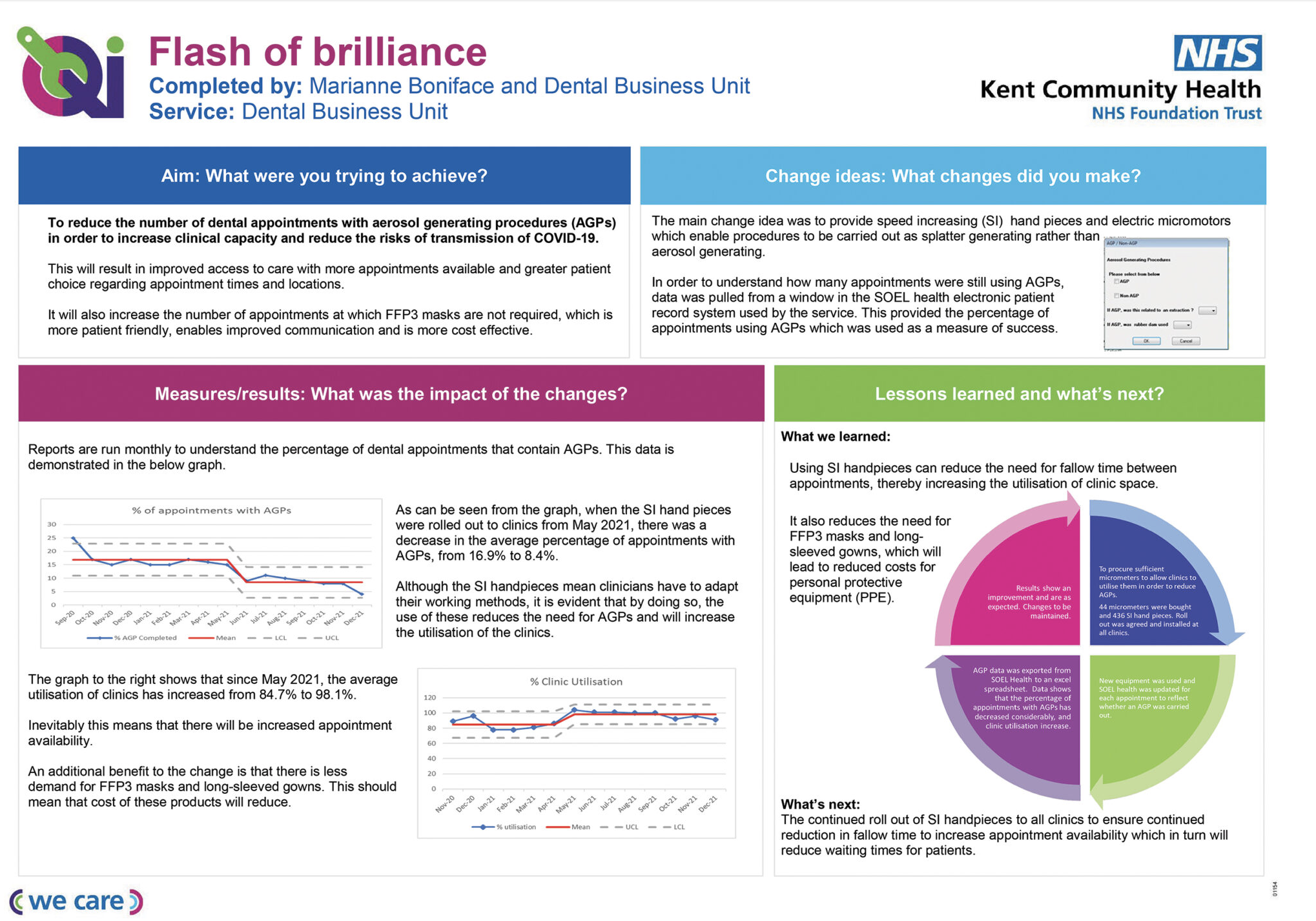Thanks to dental colleagues at Kent Community Health NHS Foundation Trust (KCHFT) working with new equipment and in a different way, they are now able to see more patients and to reduce waiting times.
The new equipment results in less aerosol splatter during certain procedures, which in turn, reduces the risk of virus transmission. When the equipment was purchased, aerosol generating procedures carried an increased risk of COVID-19 being passed on and so took up more clinic time. These procedures required an average of 25 minutes of downtime between patients and meant FFP3 masks had to be used.
With the use of the new equipment, the risk is far reduced. Less PPE is needed, fallow time is not necessary and the result is more clinic time and thereby more patient appointments are available.
Marianne Boniface, Dental Project and Business Management Lead, said: “We made these changes as a reaction to COVID-19 and we now have more appointment availability, as a result.
“Each surgery is slightly different, but with aerosol generating procedures, we would have to leave a room for an average of 25 minutes before we could take another patient, due to air flow. This impacted how many patients we could see.
“Although the new equipment has meant clinicians had to adapt their working methods, it was evident that by doing so, the use of these reduced the need for aerosol generating procedures and increased utilisation of our clinics.”

The changes have resulted in improved access to care, with more appointments available and greater patient choice regarding appointment times and locations. It has also decreased the number of appointments at which FFP3 masks are required, which is more patient friendly, enabling easier communication.
When the new equipment was rolled out to clinics from May 2021, there was a decrease in the number of appointments where aerosol generating procedures were needed, from 16.9 per cent to 8.4 per cent. Since May 2021, the average utilisation of clinics has increased from 84.7 per cent to 98.1 per cent.
Marianne said: “Using the new equipment reduced the need for fallow time between appointments, thereby increasing the use of clinic space. An additional benefit to the change is that there is less demand for FFP3 masks and long-sleeved gowns, reducing costs.
“We have now rolled this equipment out to all of our clinics to increase appointment availability, which in turn will reduce waiting times for patients.”
The KCHFT dental service runs 17 clinics in both North East London and Kent. They also provide dental services at three prison sites as well as general dental services.
The dental team used quality improvement (QI) tools to help them. They recorded data from the start and used run charts so they could clearly see the impact of the changes they made.
They have recorded their work as a QI flash of brilliance, so it can be shared.
See this on the KCHFT QI website: https://qi.kentcht.nhs.uk/maki...
Added by Terri Porrett
Have you had a browse of this website yet? If are interested in QI, then the resources and ideas shared by Kent Community Health NHS Foundation Trust (KCHFT) are a great place to look. Thank you KCHFT for sharing your work to inspire others and enable them to #pinchwithpride

